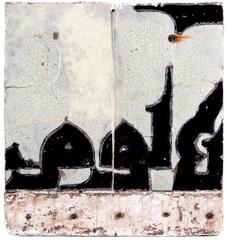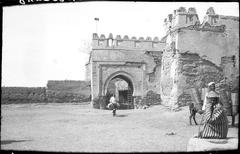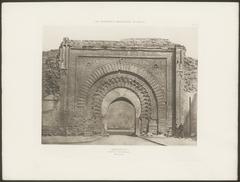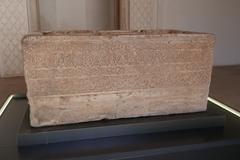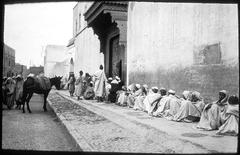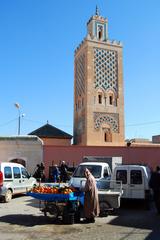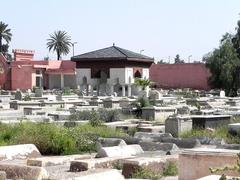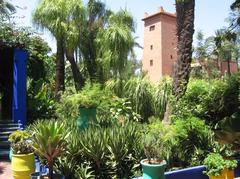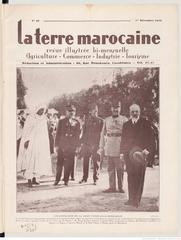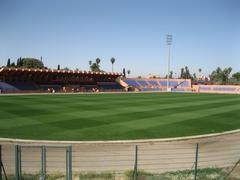Comprehensive Guide to Visiting Rue El Adala, Marrakesh, Morocco
Date: 19/07/2024
Introduction
Nestled in the heart of Marrakesh, Rue El Adala is a street imbued with a rich historical and cultural heritage. Dating back to the Almoravid dynasty, which established Marrakesh in the early 11th century, Rue El Adala—translating to ‘Justice Street’—has played a pivotal role in the judicial and administrative landscape of the city (source). Featuring a blend of architectural marvels from various dynasties, including the Almohads, Saadians, and Alaouites, the street is adorned with intricate stucco work, zellige tile mosaics, and carved wooden doors, exemplifying traditional Moroccan craftsmanship (source). Today, Rue El Adala is a vital part of the Medina of Marrakesh, a UNESCO World Heritage site since 1985, offering visitors a unique window into the city’s past and present (source). This comprehensive guide aims to provide an in-depth exploration of Rue El Adala, covering its historical significance, architectural heritage, cultural practices, and essential visitor information, ensuring a memorable and insightful visit.
Table of Contents
- Origins and Early History
- Architectural Heritage
- Role in the Medina
- Judicial and Administrative Functions
- Cultural and Religious Significance
- Influence of Colonialism
- Post-Independence Developments
- Modern-Day Significance
- Visitor Information
- Travel Tips
- Nearby Attractions
- Accessibility
- Preservation Efforts
- FAQ
Exploring Rue El Adala - A Historical Gem in Marrakesh
Origins and Early History
Rue El Adala, located in the heart of Marrakesh, Morocco, is a street steeped in history and cultural significance. The origins of Rue El Adala can be traced back to the Almoravid dynasty, which founded Marrakesh in 1070-1072 CE. The street’s name, “El Adala,” translates to “Justice Street,” reflecting its historical role in the city’s judicial and administrative functions.
Architectural Heritage
The architecture along Rue El Adala is a testament to the various dynasties that ruled Marrakesh, including the Almoravids, Almohads, Saadians, and Alaouites. The street is lined with traditional Moroccan buildings featuring intricate stucco work, zellige tile mosaics, and carved wooden doors. One notable structure is the Ben Youssef Madrasa, an Islamic college founded in the 14th century and later expanded by the Saadian Sultan Abdallah al-Ghalib in the 16th century. The madrasa is renowned for its stunning courtyard, adorned with a central pool, marble columns, and elaborate geometric patterns.
Role in the Medina
Rue El Adala is situated within the Medina of Marrakesh, a UNESCO World Heritage site since 1985. The Medina is a labyrinthine network of narrow streets, bustling souks, and historic landmarks. Rue El Adala’s strategic location made it a vital artery for trade and commerce. Merchants and artisans would set up their stalls along the street, selling goods ranging from spices and textiles to jewelry and pottery. The street’s proximity to key landmarks such as the Koutoubia Mosque and the Jemaa el-Fnaa square further enhanced its significance.
Judicial and Administrative Functions
Historically, Rue El Adala served as a center for judicial and administrative activities in Marrakesh. The street was home to several qadi (judges) who presided over legal matters and disputes. The presence of these judicial figures underscored the street’s role in maintaining law and order within the Medina. Additionally, the street housed various administrative offices, where officials managed the city’s affairs, including tax collection and public works.
Cultural and Religious Significance
Rue El Adala is also notable for its cultural and religious significance. The street is home to several zawiyas (Islamic religious schools and Sufi lodges), which played a crucial role in the spiritual and educational life of Marrakesh. One prominent zawiya is the Zawiya of Sidi Bel Abbas, dedicated to the patron saint of Marrakesh, Sidi Bel Abbas. The zawiya, established in the 12th century, is a place of pilgrimage and spiritual retreat, attracting devotees from across Morocco.
Influence of Colonialism
The French Protectorate in Morocco (1912-1956) had a significant impact on Rue El Adala and the broader Medina of Marrakesh. The French colonial administration implemented urban planning reforms that aimed to modernize the city while preserving its historical character. Rue El Adala, like many other streets in the Medina, underwent infrastructural improvements, including the installation of street lighting and sanitation systems. The colonial period also saw the introduction of new architectural styles, blending traditional Moroccan elements with European influences.
Post-Independence Developments
Following Morocco’s independence in 1956, Rue El Adala continued to evolve, reflecting the country’s socio-political changes. The street remained a vibrant hub of commerce and culture, with new businesses and cultural institutions emerging alongside traditional establishments. Efforts to preserve the historical and architectural heritage of Rue El Adala intensified, with various restoration projects aimed at maintaining the street’s unique character.
Modern-Day Significance
Today, Rue El Adala is a popular destination for tourists and locals alike. The street’s rich history and cultural heritage make it a must-visit location for those exploring Marrakesh. Visitors can stroll along the street, admiring the traditional architecture, browsing the bustling souks, and experiencing the vibrant atmosphere of the Medina. The street’s historical landmarks, such as the Ben Youssef Madrasa and the Zawiya of Sidi Bel Abbas, offer a glimpse into the city’s past and its enduring cultural traditions.
Visitor Information
- Visiting Hours: Rue El Adala is accessible to visitors 24/7. However, specific landmarks like the Ben Youssef Madrasa have their own visiting hours.
- Tickets: Entry to Rue El Adala is free, but some historical sites may charge an entrance fee. Ben Youssef Madrasa tickets are typically around 50 MAD (5 USD).
- Guided Tours: Guided tours are available and recommended for a deeper understanding of the street’s history.
- Photography: The street offers numerous photographic spots, especially around the architectural sites.
Travel Tips
- Dress modestly, especially when visiting religious sites.
- Be mindful of the bustling nature of the street and navigate crowds carefully.
- Engage with local guides for valuable insights.
Nearby Attractions
Accessibility
Rue El Adala’s narrow streets can be challenging for visitors with mobility issues. However, efforts are being made to improve accessibility.
Preservation Efforts
Preserving the historical and cultural heritage of Rue El Adala is a priority for local authorities and heritage organizations. Various initiatives have been undertaken to restore and maintain the street’s historic buildings and landmarks. These efforts are supported by international organizations such as UNESCO, which recognizes the Medina of Marrakesh as a World Heritage site. Preservation projects aim to balance the need for modernization with the imperative to protect the street’s unique historical character.
FAQ
- What are the opening hours of Rue El Adala? Rue El Adala is accessible 24/7, but specific landmarks have their own hours.
- How much do tickets cost? Entry to the street is free, but some sites like Ben Youssef Madrasa charge around 50 MAD (5 USD).
- What should I wear when visiting? Modest dress is recommended, especially at religious sites.
- Are there guided tours available? Yes, guided tours are available and recommended.
Call to Action
Explore the rich history and vibrant culture of Rue El Adala. Download the Audiala mobile app for more travel tips and updates, and follow us on social media for the latest news on Marrakesh’s historical sites.
Conclusion
Rue El Adala stands as a living testament to the rich cultural and historical tapestry of Marrakesh. From its origins in the Almoravid dynasty to its role in the bustling Medina, Rue El Adala encapsulates centuries of Moroccan history and tradition. The street’s architectural heritage, featuring landmarks like the Ben Youssef Madrasa and the Zawiya of Sidi Bel Abbas, offers a glimpse into the artistic and spiritual life of the city (source, source). Today, Rue El Adala continues to thrive as a vibrant hub for commerce, culture, and tourism, with ongoing preservation efforts ensuring that its historical character remains intact. Whether you’re exploring the intricate alleyways, browsing the bustling souks, or immersing yourself in the local traditions, Rue El Adala promises an enriching and unforgettable experience. For the latest updates and travel tips, be sure to download the Audiala mobile app and follow us on social media.
References
- Britannica, 2023, Marrakesh https://www.britannica.com/place/Marrakech
- Architectural Digest, 2023, Moroccan Architecture https://www.architecturaldigest.com/story/moroccan-architecture
- UNESCO, 2023, Medina of Marrakesh https://en.wikipedia.org/wiki/Medina_of_Marrakesh
- Wikipedia, 2023, Ben Youssef Madrasa https://en.wikipedia.org/wiki/Ben_Youssef_Madrasa
- Wikipedia, 2023, Zawiya of Sidi Bel Abbas https://en.wikipedia.org/wiki/Zawiya_of_Sidi_Bel_Abbas
